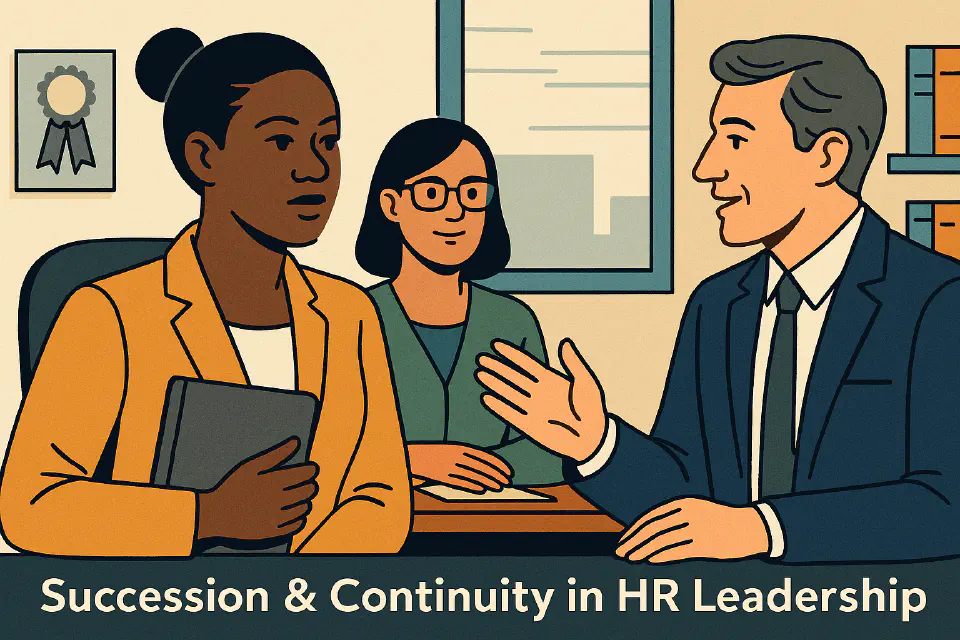
Succession & Continuity in HR Leadership
HR leaders are builders of succession systems—but too often forget to plan their own. Continuity in HR leadership is strategic, not administrative.
Succession planning is a familiar concept in HR—until it applies to HR itself. Ironically, many organizations lack a formal plan for HR leadership continuity, especially for senior roles like CHRO, heads of Talent, or HRBPs in critical business units. The result? Disrupted strategies, lost momentum, and cultural drift when key people exit.
Succession isn’t just about having backups. It’s about building capacity, retaining institutional knowledge, and ensuring the HR function evolves instead of resets.
Why Succession in HR Matters
HR leaders are uniquely embedded in strategy, transformation, and culture. A sudden gap in leadership can:
- Stall ongoing initiatives (e.g., DEI, skills frameworks)
- Disrupt relationships with business leaders
- Cause strategic drift in talent priorities
- Lead to a reactive, transactional HR mode
Key Roles to Target
Succession planning should not be limited to the CHRO. Other roles matter:
- Regional HR Directors
- Heads of CoEs (e.g., Learning, Total Rewards)
- Senior HRBPs in business-critical units
- HR Transformation Leads
Components of a Strong HR Succession Plan
Leadership Criteria
Define what great HR leadership looks like: strategic thinking, influence, analytics fluency, operational discipline.Talent Identification
Use performance and potential indicators to assess bench strength. Include stretch assignments and leadership exposure.Development Pathways
Offer rotational programs, cross-functional assignments, coaching, and exposure to the Board or C-suite.Diversity & Inclusion Lens
Track representation and avoid cloning current leaders. Prioritize psychological safety and openness in development.Contingency Planning
Have short-term, ready-now successors for key roles, especially for planned retirements or exit risk scenarios.
Common Pitfalls
- Overlooking critical roles outside the CHRO
- Focusing only on internal replacements (ignoring external pipeline)
- Poor integration with overall talent strategy
- Lack of transparency and follow-through
Strategic Approaches
- Successor Readiness Index: Track how many successors are ready in 12–18 months across all critical roles.
- Leadership Flight Risk Assessment: Use analytics and manager insight to spot turnover risk early.
- Scenario Planning: Prepare for multiple future paths, especially during transformation.
Best Practices for HR’s Own Continuity
- Make succession a living process, not a one-time review
- Regularly review role criticality and readiness levels
- Build culture of mentoring and internal mobility
- Invest in visibility and sponsorship for high-potential HR talent
Final Thought
HR often builds the tools for others—but must remember to use them too. Strong succession in HR leadership ensures the function stays strategic, resilient, and ready to lead whatever comes next.